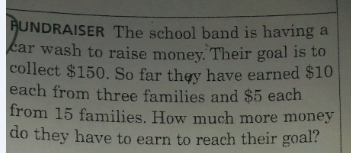P3 – Practice standards-based assessment
This is a standard that I struggle with each year. Do I teach to the test? How am I not teaching to the test if I am preparing my kids for a standardized test? I have been teaching a long time and each year these questions arise. I think what it comes down to is that the standards are written as topics we should cover in our teaching. The idea is that if we are teaching the standards then we will be preparing our students for the test, without that being the purpose of our teaching.
I also sometimes have to make decisions about topics I won’t be covering because I do not have enough time or it is more important to make sure my students truly understand each topic rather than are just exposed to each topic. For example, this year I taught a section of 6th grade math. I started working with my students on fractions going at the speed my teaching partner was with her 6th grade math class. It was not working for my students. They were not passing daily assessments or quizzes. I had to make a decision and slow down. What this meant when I it came time for my kids to take the MSP was that we had not gotten to all the topics that would be on the test, but the topics we did cover, my students know. This will benefit them in the long run and will benefit their “long-term math careers” each coming year.

